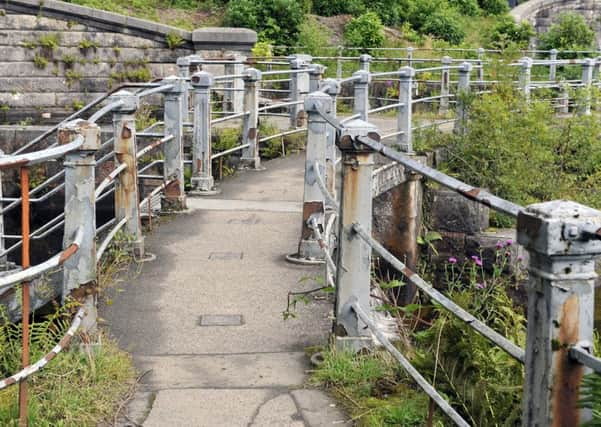Milngavie’s historic waterworks left to rot


Ken Moulson, who has been coming to the local attraction for walks for over ten years noticed on his latest visit that the Victorian buildings were being badly neglected.
He said: “Buildings and structures, such as the beautiful ornametal archway, are becoming dilapidated.
Advertisement
Hide AdAdvertisement
Hide Ad“Vegetation is growing out of much of the stonework and original wrought iron work is rusting. There’s also graffiti on some buildings.
“Why is such an amazing asset being left to rot?
“The house, which used to be a museum/visitor centre, has closed.
“Why isn’t Scottish Water carrying out maintenance on such a valuable historic amenity and making more of the fascinating history of the waterworks, which is often visited by tourists.
He added: “There was great human effort required to build such an engineering feat as they had to dig solid rock from Loch Katrine to Glasgow.
Advertisement
Hide AdAdvertisement
Hide Ad“It took years to achieve and it was a huge investment for Glasgow Corporation.
“It’s sad that any respect for the appearance of the place appears to have been lost in recent years.
“I want to know why Scottish Water has allowed it to become so shoddy?”
A spokesperson for Scottish Water, said: “We are assessing what maintenance and improvement work might be required on our property at the former Milngavie Water Treatment Works and in the area around the Mugdock and Craigmaddie reservoirs.”
Advertisement
Hide AdAdvertisement
Hide AdThe Milngavie reservoir is visited by tourists and walkers.
It is made up of the Craigmaddie and Mugdock reservoirs and was opened in 1859 by Queen Victoria.
It is the main supplier of water to the city of Glasgow and can hold up to 548 million gallons of water.
The waterworks led to the virtual eradication of typhoid and cholera, diseases which were widespread at the time, in the city.